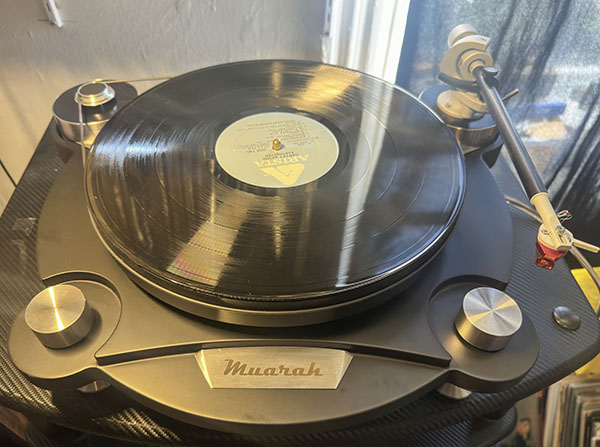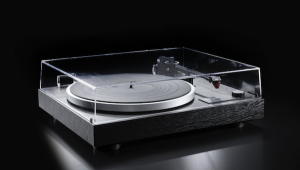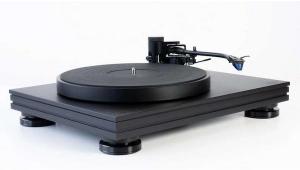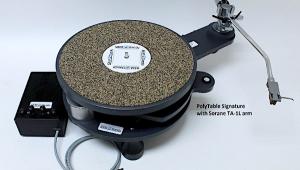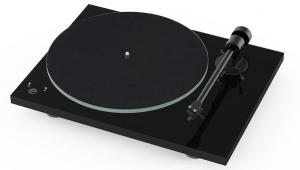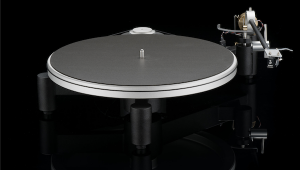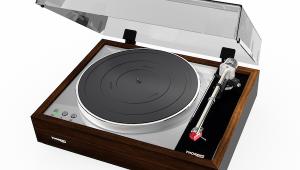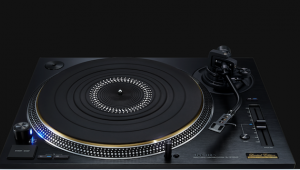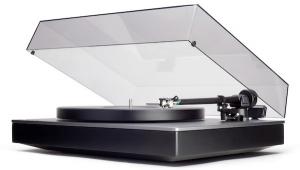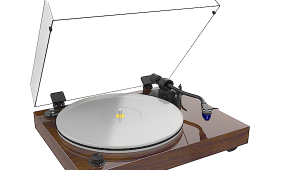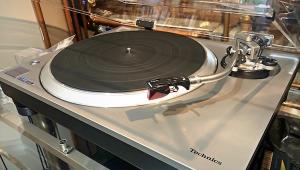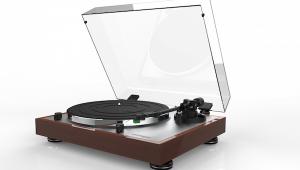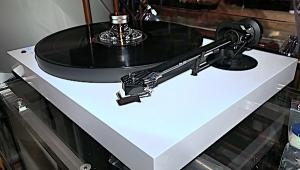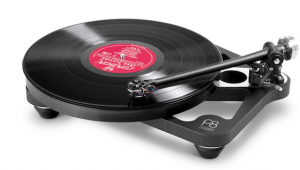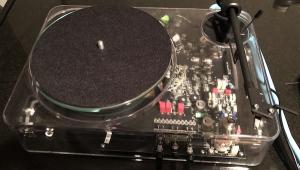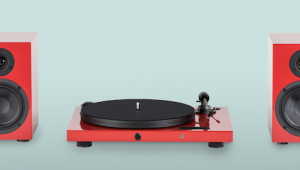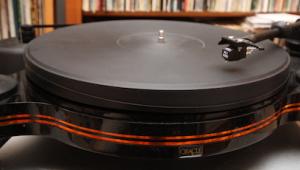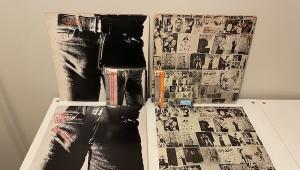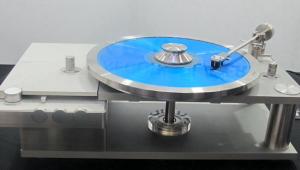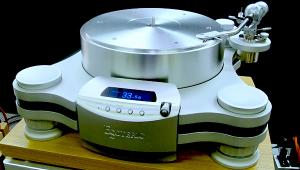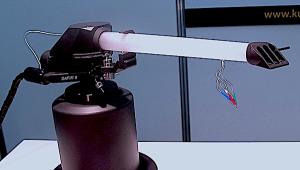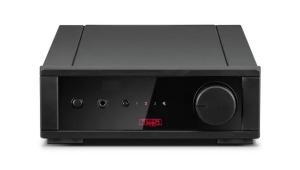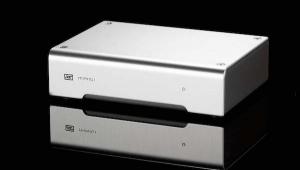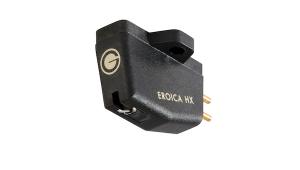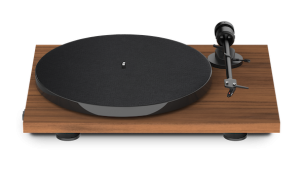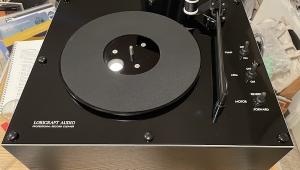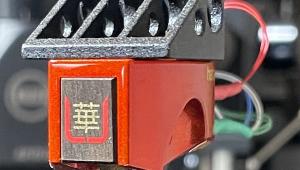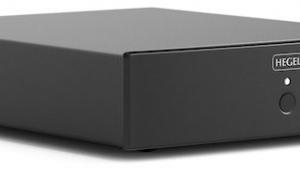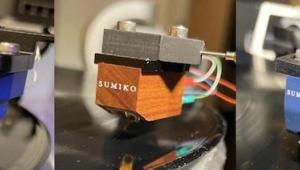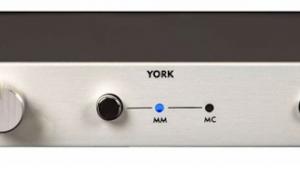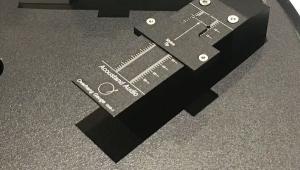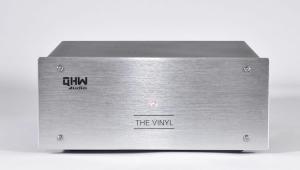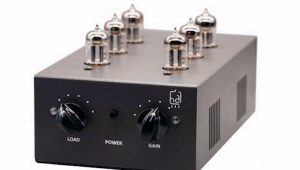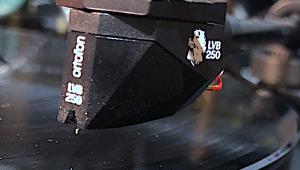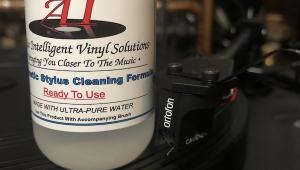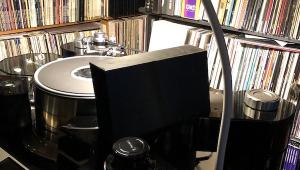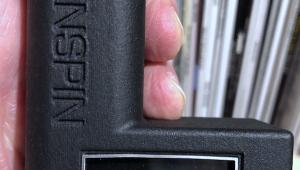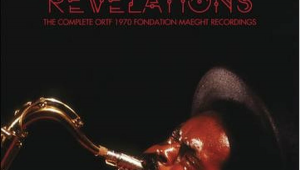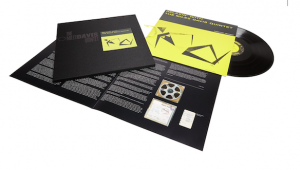Muarah MT3 Turntable
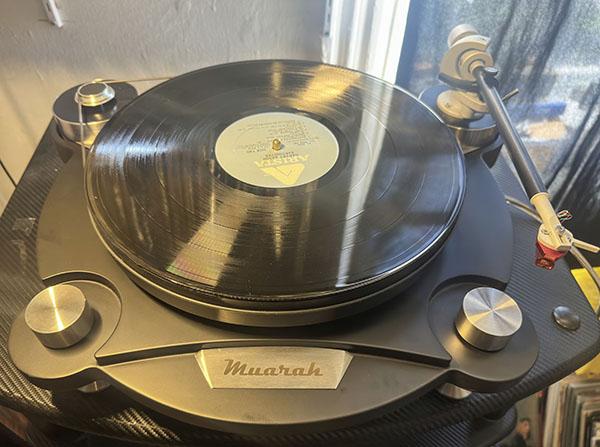
As I wrote in my Muarah, Ilumnia, and Circle Labs room report from High End Munich 2025 over on our sister site Stereophile, “I’d been in touch with Muarah Audio’s U.S. distributor, Octopus Audio, ahead of the Munich show, as I’m currently reviewing the company’s entry-level MT3 turntable ($2,990) for Analog Planet. But having that deck in-house didn’t prepare me for the striking flagship MT1 EVO ($8,700), or the new Ilumnia loudspeakers. And the room offered more surprises still.”
After hearing that top-tier Muarah table and Circle Labs amplification driving those Ilumnia Magister Novus MkII speakers, I then reported, “It was startling to see the Ilumnia speaker’s reverse-mounted cone dance and ripple as music played. War’s ‘Low Rider’ and ‘Summer’ projected from the MT1 EVO led system with clear sound, filling the small room with sound that was equally relaxed, laid back, grain free, and engaging. Ahmad Jamal’s ‘Milan’ was also sparkling, practically floating and mildly visceral.”
Some background now, before getting to the MT3 reviewing task at hand. Based in Warsaw, Poland, Muarah Audio — founded in 2015 by engineers Jacek Siwiński and Wiesław Zawada — manufacture turntables, tonearms, an integrated amp, and a phono preamp. Muarah currently makes three turntables: the MT1 EVO I heard in Munich, the MT2 (with an SRP circa $6K, or the midpoint of their other two tables), and the focus of this review, the almost-$3K entry-level MT3, which was indeed waiting for me at home after I had returned from Munich. Naturally, I was eager to get right down to it.
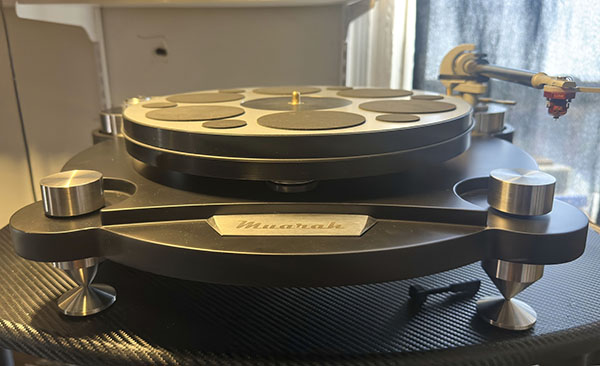
Features & Specs
The Muarah MT3 table is equipped with a ceramic bearing in a hardened steel shaft and Teflon ball seat. It offers 33⅓ and 45rpm playback speeds, easily adjustable between the two by moving a rubber belt. Additional features include an auto-stop function after 50 minutes of operation, a unique hybrid mat integrated into the aluminum platter, and adjustable feet.
The MT3’s lightweight, dual-layer, sandwich construction plinth is comprised of MDF. This holds a V-shaped steel upper plate, mounted flush with the plinth. An AC synchronous motor is stationed on the left arm of the V; the tonearm mount is on the right. Bolted to the V at its crux, a triangular shaped, dual-layer metal plate holds the hardened steel shaft which supports the platter and spindle, which rotates within a self-lubricating, oil-soaked bronze sleeve, which is said to aid damping. The plinth includes a foam board underside for enhanced isolation.
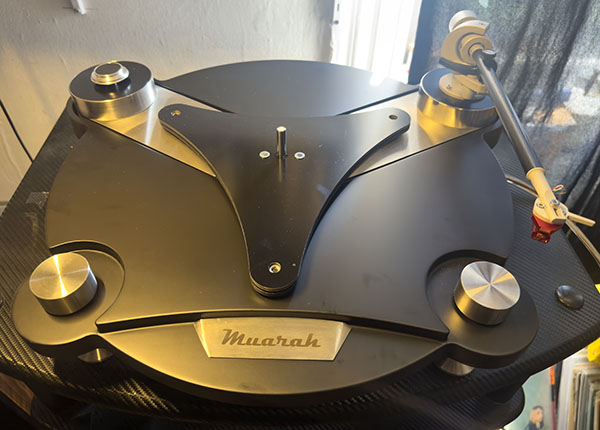
Though the plinth was thin and light, its construction — especially the motor and tonearm bases, adjoining metal top plate, and hefty footer leveling dials — was first rate. This is a solid, smartly manufactured turntable. The tonearm was equally sleek, mechanically robust, and well made. Three inox steel cone discs (damped on their underside) sit under the table’s three aluminum feet, their points lodging into small recesses within the discs.
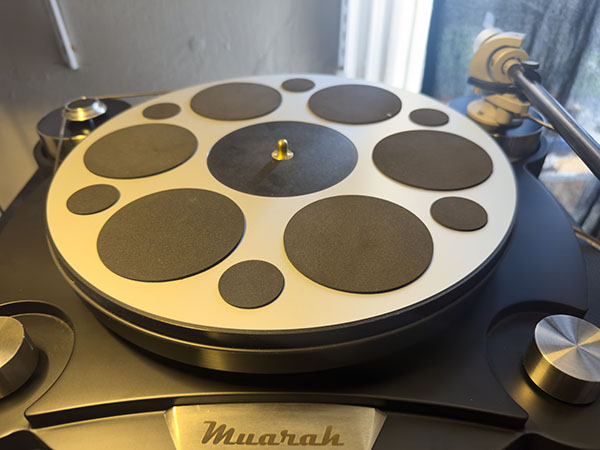
The MT3 table uses a 30mm high, 2.5kg (5.5lb) black acrylic (PMMA) platter. Instead of a traditional mat, Muarah integrates a unique damping system of 12 embedded oval-shaped, foam rubber discs — of two different sizes — within its surface.
Muarah includes their own MY-1/9 9in aluminum-carbon fiber tonearm on the MT3. Their other two more expensive tables offer Sorane (Japan) and Mørch (Denmark) tonearms. The MY-1/9 arm is standard on the MT3 — but on its own, it has an SRP of €1,968.
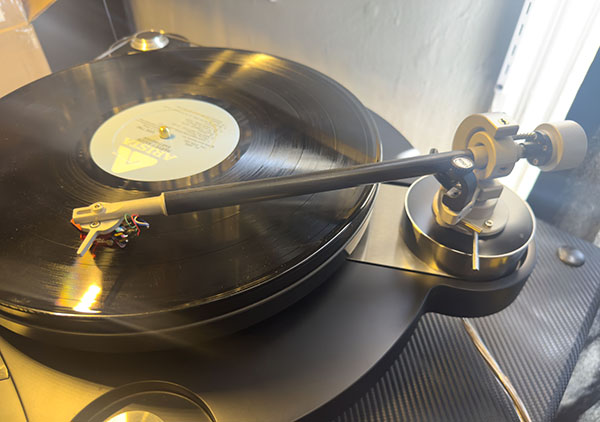
The MY-1/9 gimbal arm was jointly designed by Piotr Skiba (Shape of Sound) and Muarah. It has an effective length of 9in, a mounting distance of 214mm, and overhang of 18mm. Offset angle created by the arm tube and the headshell’s axis is 23.75mm. VTF, VTA, azimuth, and antiskating are all user adjustable. The arm uses miniature ball bearings, and has an effective mass of 15g.
The MY-1/9 arm tube is engineered with an inner aluminum tube housed within an exterior carbon fiber tube, the layering implementation said to improve performance. This design also reportedly maximizes rigidity and helps dampen resonances by leveraging the differing characteristics of the two materials. Additionally, the carbon tube provides shielding for the arm’s internal wiring. The straight arm tube design is said to be crucial for achieving optimal effective mass and stiffness. Though lightweight, the Muarah MY-1/9 tonearm felt substantial and well-designed.
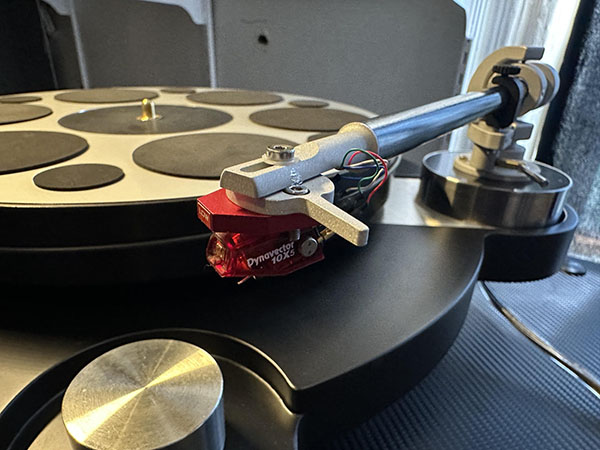
Setup
The MT3’s comprehensive manual, exclusively in the PDF format, meticulously addressed every detail. No aspect was overlooked. I was particularly impressed by the thorough setup guide for the turntable and tonearm as well as the small yet significant details, such as the three included Allen wrenches. These were neatly secured with a small O-ring inside a plastic envelope, which also contained the antiskate weight. Per usual, this weight is placed on a knurled rod at the back of the tonearm and set according to the tracking force of the cartridge in use. This Muarah table and arm design is not only beautifully conceived and executed, but it also features thoughtful touches that I found highly appealing.
Aligning my Dynavector 10X5 MkII low-output MC cartridge on the MY-1/9 arm was fairly straightforward using the provided alignment jig. Once I pinpointed the cart’s stylus into the small circle on the protractor, I set the offset angle by rotating the cart to align with the diagonal lines on the protractor. Minor fiddling with a flashlight and a jeweler’s loop was required before locking in both setup parameters. Setting VTA was simple enough via adjustment of a small grubscrew in the tonearm pillar, followed by VTF tuning.
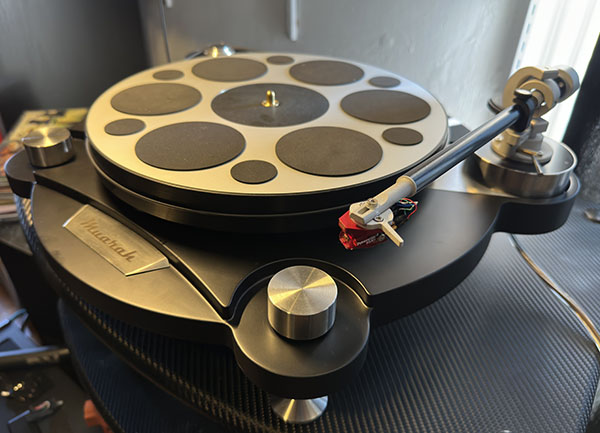
I found the system for feet adjustment somewhat inadequate, however. Only the front two feet are adjustable, so I had to insert a shim under the third foot in the back to ensure the table was level on the warped wood floors of my 1920-era building. Inserting the footer’s pointy foot exactly into the small well in the supplied disc required a flashlight — and better glasses!
My playback system for this review included the aforementioned Dynavector 10X5 MkII MC cart, PrimaLuna EVO 100 phono preamp, Grimm Audio PW1 phono preamp (my review of the PW1 is coming soon to AP, btw!), HiFi Rose RA280 integrated amp, Voxativ Ampeggio 2024 loudspeakers, DeVore Fidelity gibbon Super Nine loudspeakers, and Spendor BC1 loudspeakers. AudioQuest Pegasus and Triode Wire Labs Spirit II (RCA) handled the interconnects, and AudioQuest William Tell (10in) speaker cables handled the speakers.
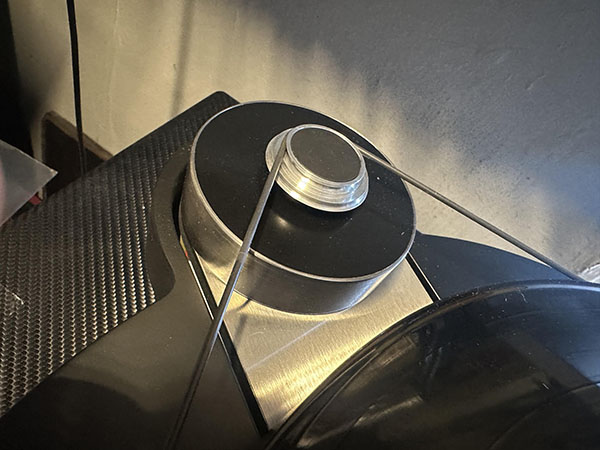
Listening Sessions
Before playing any record, I always ensure that it’s dust-free. I use a large record brush reminiscent of an old-fashioned shaving tool. Many turntables, even high-end ones, slow down when pressure is applied to remove dust from the grooves. The Muarah MT3 table, however, maintained its speed during cleaning, a testament to its robust motor.
The MT3 delivered impressively robust low-end bass performance for its price range. Consistently, this table surprised with its ability to produce deep, powerful bass with substantial weight, though it lacked the bass precision and clarity of higher-end turntables. From the abyssal depths of 2011’s The Haxan Cloak (Aurora Borealis ABX050) to the throbbing synth bass in Billie Eilish’s March 2019 debut LP When We All Fall Asleep, Where Do We Go? (Darkroom/Interscope 00602577427756) and Everything But The Girl’s May 1996 effort Walking Wounded (Virgin V2803), the MT3 excelled at driving the 8in woofers of my Spendor BC1s to their full potential.
The MT3 also generally created a grand soundstage, if not containing the superior layering and fine line separation of more expensive tables. But in its $3K price range, the MT3 absolutely ruled the roost in presenting a large-scale soundstage populated with dense, corporeal images that consistently impressed.
Muarah’s approach of isolating the motor and tonearm separately, while giving the platter an independent base, resulted in a remarkably low noise floor, precise speed, and exceptional note articulation. This design delivered the rhythm, drive, and pacing reminiscent of classic idler wheel tables, or lightweight plinth designs. Despite its lightweight construction, the MT3’s bass weight and soundstage depth align more with mass-damped designs.
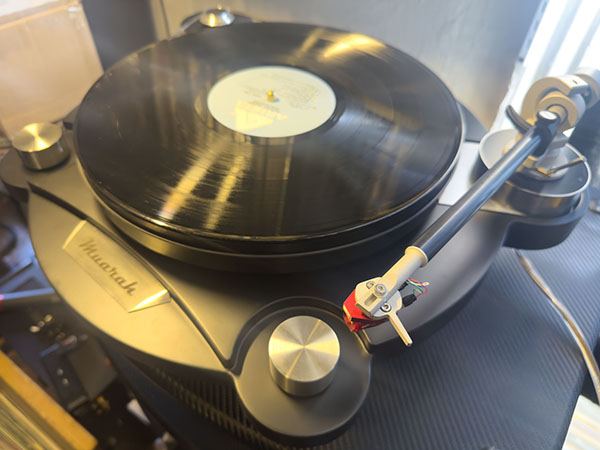
At one point in my reviewing notes, I wrote, “drive, force, pace, rhythm, snappy, popping, toe tapping” — that last phrase a favorite descriptor used by the late, great Art Dudley, whenever he felt a component captured the essential “moving and grooving” aspect of a recording.
If a record’s production contained pinpoint imaging with defined edges, the MT3 expressed it from Billie Eilish to Harvey Mason’s 1976 funk treatise Earthmover (Arista AL 4096) to the flowing orchestral finery of Respighi’s The Birds, via Antal Dorati conducting the London Symphony Orchestra (Mercury Living Presence SR 90153).
The MT3 impressively outperformed its class in terms of raw power, drama, and intensity. On The Great Jazz Trio’s 1978 LP The Great Jazz Trio Direct From L.A. (East Wind EW-10005), drummer Tony Williams delivers a relentless performance, balancing explosive energy with moments of restraint for maximum impact. During his solo on “A Night in Tunisia” (Side 1, Track 1), Williams unleashes a fierce assault, from rapid single-stroke rolls to quaking bass drum accents that push speakers to their limits. The MT3 handled this complexity effortlessly, conveying every bass drum hit and intense tom roll with energy to spare. The record presented a silken personality which the MT3 captured, from Hank Jones’ piano elegance to Ron Carter’s bass splendor to Williams’ rhythm majesty.
Even on a stylistically different record like The Louvin Brothers’ 1956 classic, Tragic Songs of Life (Capitol T769), the MT3 transported me right into the Capitol Records Tower in Hollywood. The brothers’ haunting harmonies came to life, their heavily echoed vocals pressurizing the studio — while guitar, mandolin, and upright bass provided a moody backdrop.
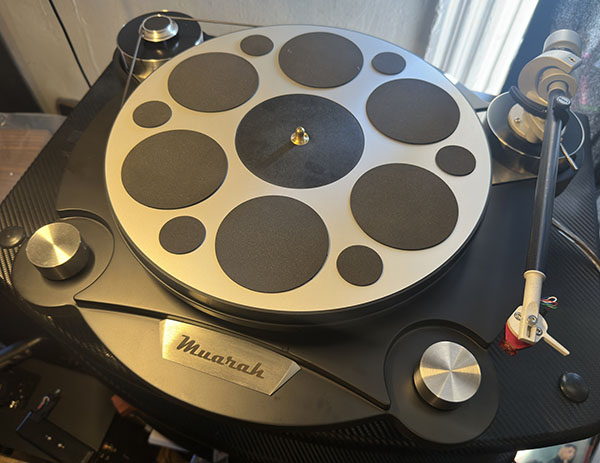
Conclusions
The Muarah MT3 turntable consistently impressed me with its ability to capture the essence of music, delivering a lifelike, engaging, and expressive reproduction that defied its limitations. These included a tendency to congest elements of complex orchestral recordings in the upper mids, and a slightly less precise handling of bass notes. However, with its swift transient response, lifelike pacing, rhythmic prowess, expansive soundstage, and pinpoint imaging, the Muarah MT3 stands out as an exceptional turntable from a perhaps lesser-known brand. Go ahead and give it a spin.
For more about Muarah, go here.
To find an authorized Muarah dealer, go here.
Author bio: Former musician, former artist, and former legal wastrel Ken Micallef has written numerous hi-fi equipment reviews for Stereophile and Analog Planet, and his byline has also appeared within Mojo, Electronic Musician, and The Grammys. You can also find him at YouTube (Ken Micallef Jazz Vinyl Audiophile).
